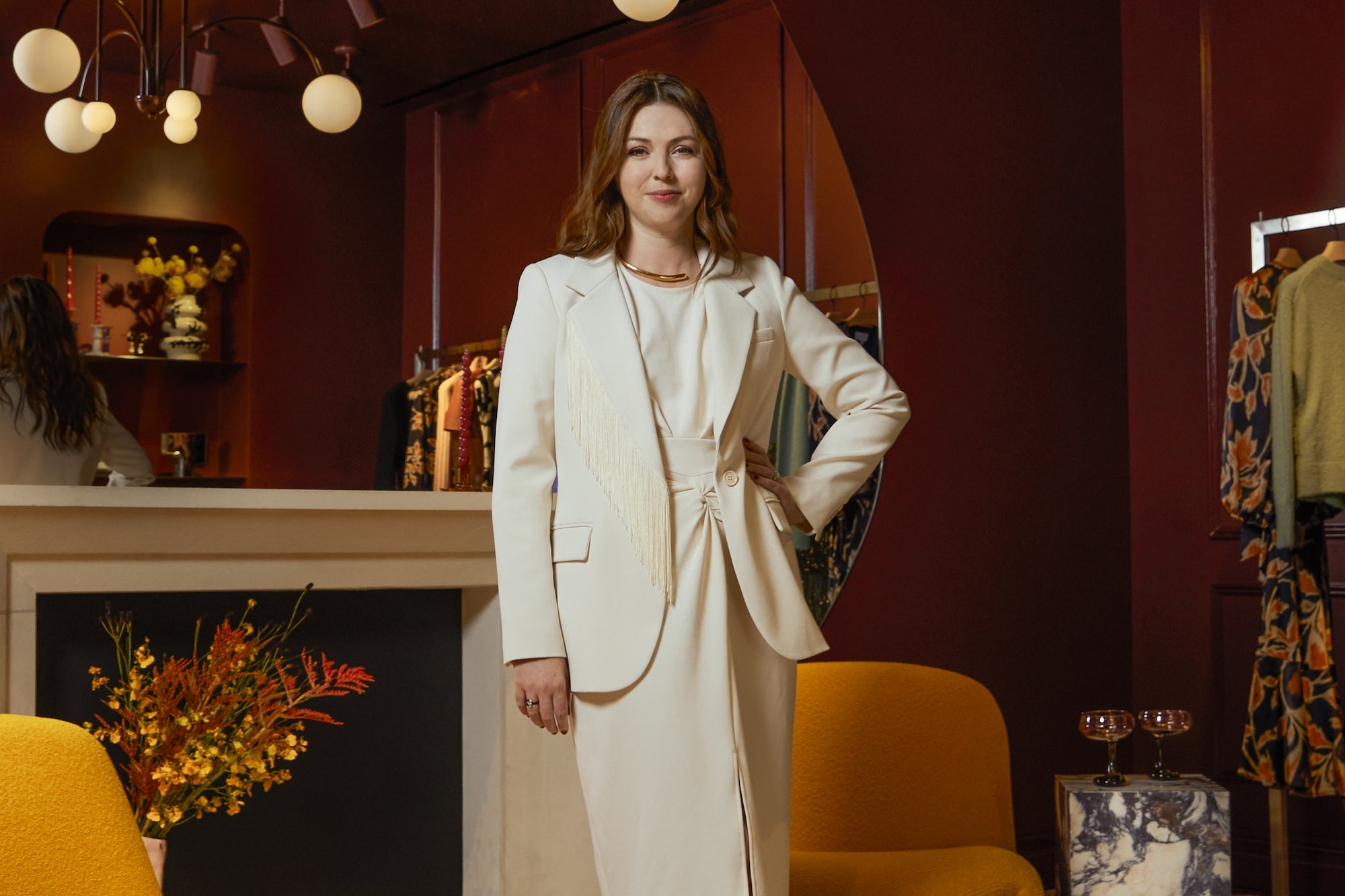This Millennial Founder Decorated Her Dorm Room Using Products She Created At 18, Amanda Zuckerman co-founded dorm décor brand Dormify with her mom. Now, she's a 27-year-old creative director for the fast-growing brand she build from the ground up.

In the Women BIZ Experiences series My First Moves, we talk to founders about that pivotal moment when they decided to turn their business idea into a reality—and the first steps they took to make it happen.
In 2010, when Amanda Zuckerman was preparing for her freshman year of college, she and her mom, Karen Zuckerman, went shopping for her dorm room. It wasn't an easy outing: No one retailer or brand could provide what Amanda needed to create a dorm room that felt homey and cohesive. The two identified the problem and came up with a solution. They spent years building a foundation and understanding the market before they launched their own complete line of dorm-room décor in 2013 dubbed Dormify. Here's how they studied and solved the problem.
1. Identify the problem.
After their failed shopping trip, both Amanda and Karen knew there was a gap in the market. With an eye for design and a good amount of determination, they were able to create a beautiful room for Amanda using existing products -- but it was no small feat. "A marketplace for all of these different categories just wasn't going to be the best solution," Amanda says. "We wanted to fill this hole, create our own line that gives you everything you need for your dorm room: Twin XL bedding and décor that was both age appropriate and cool."
Related: How Losing Her Job Helped Jaclyn Johnson Find Her Inner CEO.
2. Find an available name.
Dormify seems like the perfect summation of the brand's mission, but at the time, it was all about availability. "We didn't spend that much time thinking about it," Amanda admits. "We just started looking for domain names that weren't taken. We picked a few and considered each, and Dormify just stuck." The mom and daughter duo also bought the domains for anything that could be useful in the future, if the brand took off and wanted to expand. "We bought names for things that had to do with apartments, boys, babies, just making sure we owned them," she says. But her brand-building advice for budding BIZ Experiencess in the Instagram age? "Just grab an Instagram handle and start putting out content."
3. Talk to your customers -- or in this case, your friends.
The best way to find out what college students need? By simply asking them -- and Amanda had unlimited resources at her fingertips. "I talked to my friends all the time, and I spoke to my sorority sisters about more specific, targeted questions we had," she says. All the while, she'd communicate with her mom via Gchat to keep the business moving forward, though most decisions did fall on the young founder. "I was doing a double major in business and graphic design, which really gave me a solid background and validated what we wanted to build," she says. "But I also lived and breathed what we were trying to do, because I was on campus, so I kind of became the dictator of decisions."
Related: Why This Intimate Apparel Founder Walked Away From a Wholesale Business That Was 700 Stores Strong.
4. Take a crash-course in manufacturing.
"We knew how we wanted the brand to look and feel, but we didn't even have business cards -- all we had was a logo," says Amanda. "But we needed to meet with manufacturers." So she and her mom attended NY NOW, a trade show for the home and lifestyle market, and walked the floor to get a sense of different vendors and manufacturers. From there, they narrowed their search. "We went to the textile building on Fifth Avenue in Manhattan and just started knocking on doors until someone agreed to work with us," she says. "A lot of people literally laughed and were like, you don't know anything about textiles or manufacturing. They wished us luck and sent us on our way." But one brave manufacturer listened to their pitch that day. "They knew it was a good idea -- they've sold to the Bed Bath & Beyonds and the Targets of the world," she says. For the next year, that was their manufacturing partner.
5. Build a brand foundation.
To build buzz around the brand before the actual product launched, Amanda and her mom started a simple blog using Wordpress. "The point was to get people talking about dorm décor and college life and all these things that relate to Dormify to solidify proof of concept," she says. "At the time, people didn't care about interior design like they do now, so we had to get people talking." She recruited her friends as brand ambassadors, dubbed them style advisors and got them writing for the blog about everything from rushing a sorority to surviving freshman year. "It grew and grew, and we kept recruiting writers through our network until we had people contributing that I didn't even know."
Related: How Two Sisters Turned This Wearable Art Textile Experiment Into a Bustling Global Enterprise.
6. Start selling -- whatever you can.
While Amanda and her mother were perfecting their product development, they were eager to get the brand name out there and start making connections with customers. So they took their first website live, selling on-demand printed posters and some curated pillows and accessories from other wholesalers. "We were just like, let's get something up there," she says. When the full suite of Dormify products went live, the company already had an audience and consumer base. "My junior year of college was the first time I decorated my dorm room with Dormify," Amanda says.










